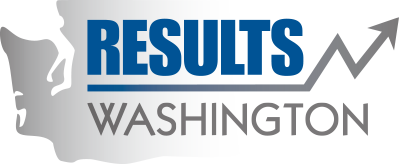Archived: New HIV cases
On December 1, 2014, World AIDS Day, Governor Inslee issued a proclamation to end AIDS in Washington. The proclamation set a goal of reducing new HIV diagnoses by 50%, by2020; reducing disparities in health outcomes for people living with HIV (PLWH);and tasked the HIV Planning and Steering Group (HPSG), a statewide HIV treatment and prevention planning body, with developing recommendations on how the state can achieve the goals of the proclamation. As there are significant existing HIV treatment and prevention efforts in Washington’s public and private sectors, the HPSG focused on developing End AIDS Washington (EAW) recommendations that would complement, supplement, and/or expand upon existing efforts. The recommendations depend on continuing current efforts and do not seek to replace HIV programs and interventions currently in process.
In Washington State, HIV incidence has steadily decreased over the past decade. In 2006, the state’s HIV diagnosis rate was 8.8 cases per100,000 residents. In 2015, the state rate was 27% lower, at 6.4 cases per100,000 residents. Similarly, CDC estimates that HIV incidence rates fell approximately 19%, between 2005 and 2014, nationwide.
Both in Washington and across the U.S., the largest decreases in HIV incidence appear to be happening among white gay and bisexual men. Although statewide this population accounted for nearly half (45%) of all new HIV diagnoses, between 2006 and 2015; case counts dropped more than 35%,during the past 10 years. Nationally, the trend is similar, with new HIV diagnoses decreasing nearly 20%, over the past decade. These trends have occurred despite data from the National HIV Behavioral Surveillance System which suggests HIV testing among white gay and bisexual continues to improve. Likewise, in Washington, new HIV diagnoses are down approximately 30%, among persons who inject drugs, and down roughly 22% among heterosexual men and women. For both groups, national data also show downward trends.
Yet, while these HIV prevention successes are certainly important, several health inequities remain; which will challenge our ability to achieve the stated Results Washington goal. HIV incidence among persons of color –roughly half of the state’s HIV epidemic--remains disproportionately high. For example, HIV diagnoses among black and Hispanic gay and bisexual men have increased 68% and 57%, respectively, over the past 10 years. These increases are substantially larger than those observed nationally within the same populations: 24% among gay/bisexual men who are black, and 22% among those who are Hispanic.
The HPSG established 5 goals for EAW:
- Reduce by 50% the rate of new HIV diagnoses.
- Increase to 80% the percentage of people living with HIV who have a suppressed viral load.
- Reduce by 25% the age-adjusted mortality rates for people living with HIV.
- Reduce HIV-related health disparities among people living with HIV.
- Improve quality of life for PLWH.
Recommendations:
- Identify and reduce HIV stigma
- Reduce HIV-related disparities
- Implement routine HIV testing
- Increase access to pre-exposure prophylaxis
- Create health care that meets the needs of sexual minorities
- Improve HIV services for substance users
- Remove barriers in insurance and increase healthcare affordability
- Increase access to safe, stable, affordable housing
- Deliver whole-person health care to PLWH
- Launch Healthier Washington for Youth
- Include meaningful community engagement
Successful implementation of EAW requires collaboration across many sectors, including, but not limited to:
- PLWH and communities affected by HIV
- Governor’s Office and Executive Agencies
- Washington State Legislature
- Healthcare Organizations and Systems
- Offices of Statewide Elected Officials
- Affordable Housing Sector
- Local Health Jurisdictions (LHJ), Local Governments, and Service Providers
For additional information on testing and services available visit: End Aids Washington
